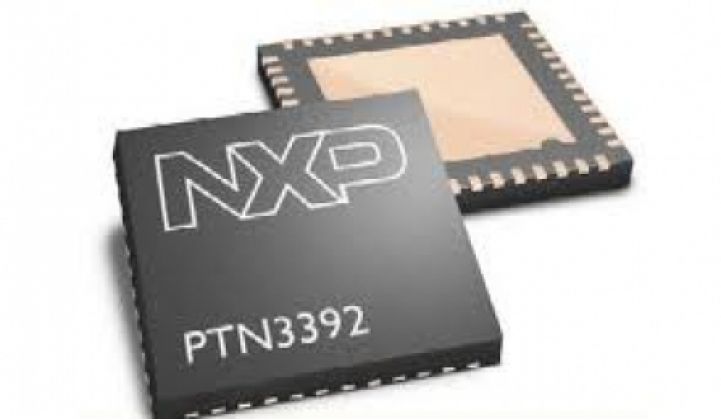Why would you want to switch from conventional light switches to wireless ones powered by ZigBee or power line networking?
“It will save you a lot of copper,” said Rene Penning de Vries, the chief technology officer at NXP. “Copper is pretty expensive.”
NXP is one of those companies you’ve probably never heard of but whose products you use daily. Formerly Philips Semiconductor, the group got spun out as an independent entity in 2006 and this summer held an IPO. It competes directly against companies like Freescale (formerly Motorola’s chip division), Infineon (ex-Siemens) and National Semiconductor for chips that go into cars, power supplies, industrial equipment and household products.
As time goes on, NXP and these other companies will be silent partners to nearly everyone in the green industry. So what’s on de Vries’ mind?
--Consumers might see quick improvements in LED bulbs. Most of the screw-in LED bulbs coming to market generate white light by combining a blue light LED with a yellow phosphor. These work, but manufacturers can get a better light tone by combining red, blue and green LEDs under a single lens.
NXP has devised a controller that can measure the drive current going into RGB bulbs and can change the interaction between the three LEDs to reduce ambient temperature and/or color. Ideally, it will make it easier to bring these kinds of bulbs to market.
“We change the pulse width of RGB dynamically,” he said.
The company also has a line of chips for boosting the performance and life of compact fluorescent bulbs by dynamically adjusting the frequency and current.
--The wireless light switch shown above? Most likely technologies like this will first appear in large numbers in commercial buildings where the reduced bill of materials (i.e., less copper) makes financial sense. (EnOcean and Leadalite make wireless switches that harvest energy from the kinetic motion of your finger flipping the switch.)
--Although ZigBee has become quite popular in the U.S. and is the focal point of many U.S. home networking trials, don’t count out power line networking, he added.
--NXP’s first solar product will be adding a DC-to-DC converter to individual solar modules in an array. The DC power would then be fed into a DC-AC inverter. It increases the number of components, but increases the control and insight into each panel.
--Expect to see batteries, security and RFID come together. Consumer electronics manufacturers want to insulate themselves from problems that arise when consumers or middlemen swap out genuine parts for cheaper alternatives. A Nokia phone outfitted with a substitute battery recently injured the phone's owner, de Vries said.
Batteries can be embedded with controllers that will effectively disable the host device and/or the battery if replaced. It doesn’t sound 'green' at first blush, but think of the applications. Electric car makers will want this to keep rogue cells out of their battery packs and vehicles. Considering the controversy that has swirled around smart meters, home area networking companies may invest, too.
--Power management for consumer devices will continue to improve. The charger and adapter market grows about 6 percent a year and each adapter maker is trying to figure out ways to reduce operating power losses and implement deeper sleep states. Cutting half a watt at the chip level can turn into a reduction of 5 to 10 watts at the device level. (Some chips are also down to standby power that ranges around 10 milliwatts.)
--Fun facts: The world consumes about 140,000 terawatt-hours of power per year. Appliances use 17,000 terawatt hours, and semiconductors account for about 125 terawatt hours of that total. Chip manufacturing consumes about 50 terawatt hours of electricity a year.



